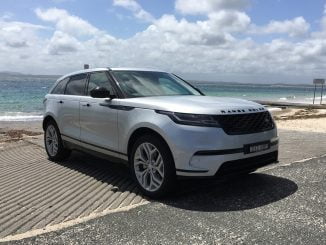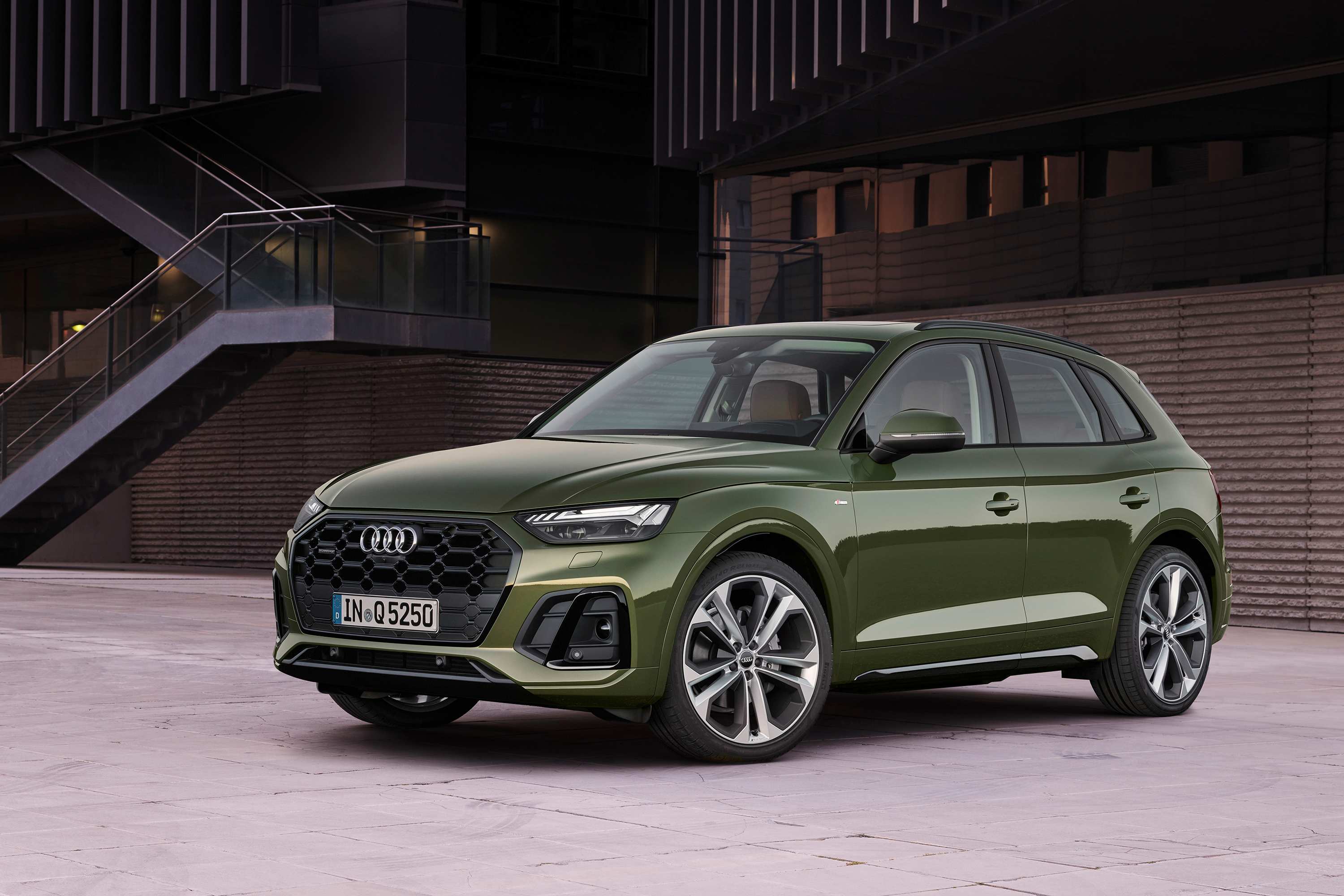 The Audi Q5 has been one of the bestselling mid-size luxury SUVs in its segment for many years. And now, Audi has made it even better and even more attractive.
The Audi Q5 has been one of the bestselling mid-size luxury SUVs in its segment for many years. And now, Audi has made it even better and even more attractive.
- Sharper design with an even stronger Q identity
- Rear light cluster featuring new digital OLED technology
- New MMI touch-sensitive controls
The optimized 2021 Q5 combines a sporty character with excellent everyday usability, and comes equipped with a wide array of infotainment and assistance systems. The sharpened exterior design of this highly successful model emphasizes the Q identity and boasts a rear light cluster featuring digital OLED technology for the first time worldwide.
Australian information
The new Audi Q5 is expected to arrive in Australia in the first-half of 2021. Further information on the model line-up, pricing and specification details will be announced closer to launch.
Global Information
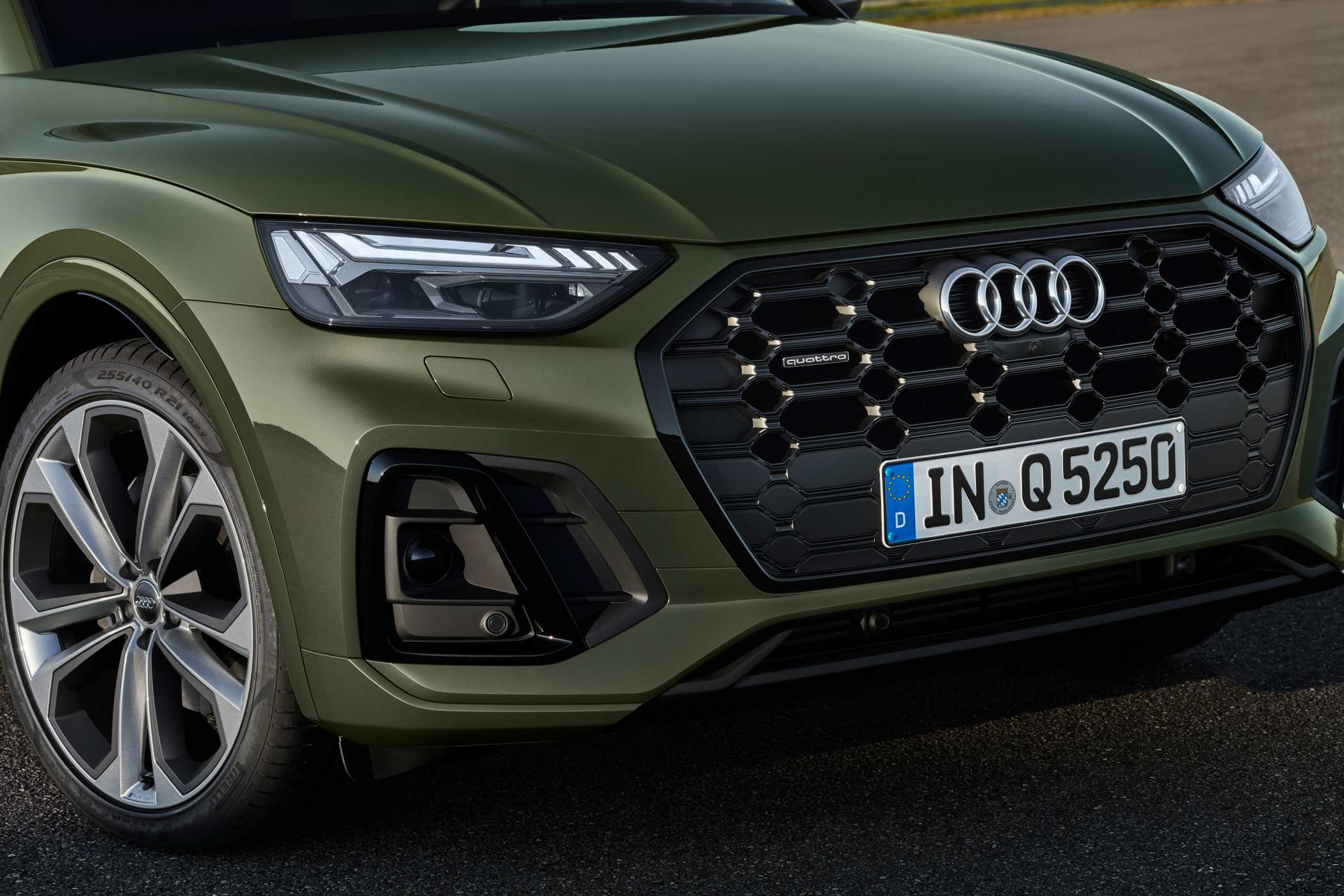
The exterior design: Audi Q design language now even more distinctive
The strong Q identity characterizes the exterior of the Audi Q5 with its expression of power, robustness and safety. In executing the exterior update, Audi designers further emphasized this look and feel with a series of distinctive details.
The octagonal Singleframe is now shallower and appears wider than before. The side air intakes have grown in height and are now structured by trapezoidal insets. The upper section of the LED headlamps features a new signature for the daytime running lights.
Viewed from the side, the Q5 now has lighter look with greater ground clearance thanks to the redesigned sill insert. At the rear end is a new trim element between the light clusters and a new diffusor insert with a horizontal fin. As well as the standard trim there are also two optional design lines.
The advanced line comes with chromed vertical ribs in the Singleframe, along with under-ride guards beneath the front and rear bumpers in silver instead of black. The S line comprises a sporty honeycomb in the Singleframe and a chrome strip framing the rear diffusor.
Two of the twelve available paint colours are new – district green and ultra-blue. The black trim package is available as an option.
The interior design: a light touch with premium quality
The horizontal emphasis of the interior design conveys a feeling of expanse and lightness. The sculptural, elegant sweep of the trim inlay separates the lower and upper sections of the dashboard, with the focal point formed by the new freestanding MMI touch display with acoustic feedback. The previous rotary/push control on the centre-tunnel console is absent, its place now occupied by a storage cubby.
Q5 customers can also choose from three interior finishes: base, design selection and S line, which can be combined as desired with the exterior trim packages. The design selection interior comes with the contour/ambient light package, which incorporates an array of lighting effects that perfectly enhance Audi’s characteristic workmanship.
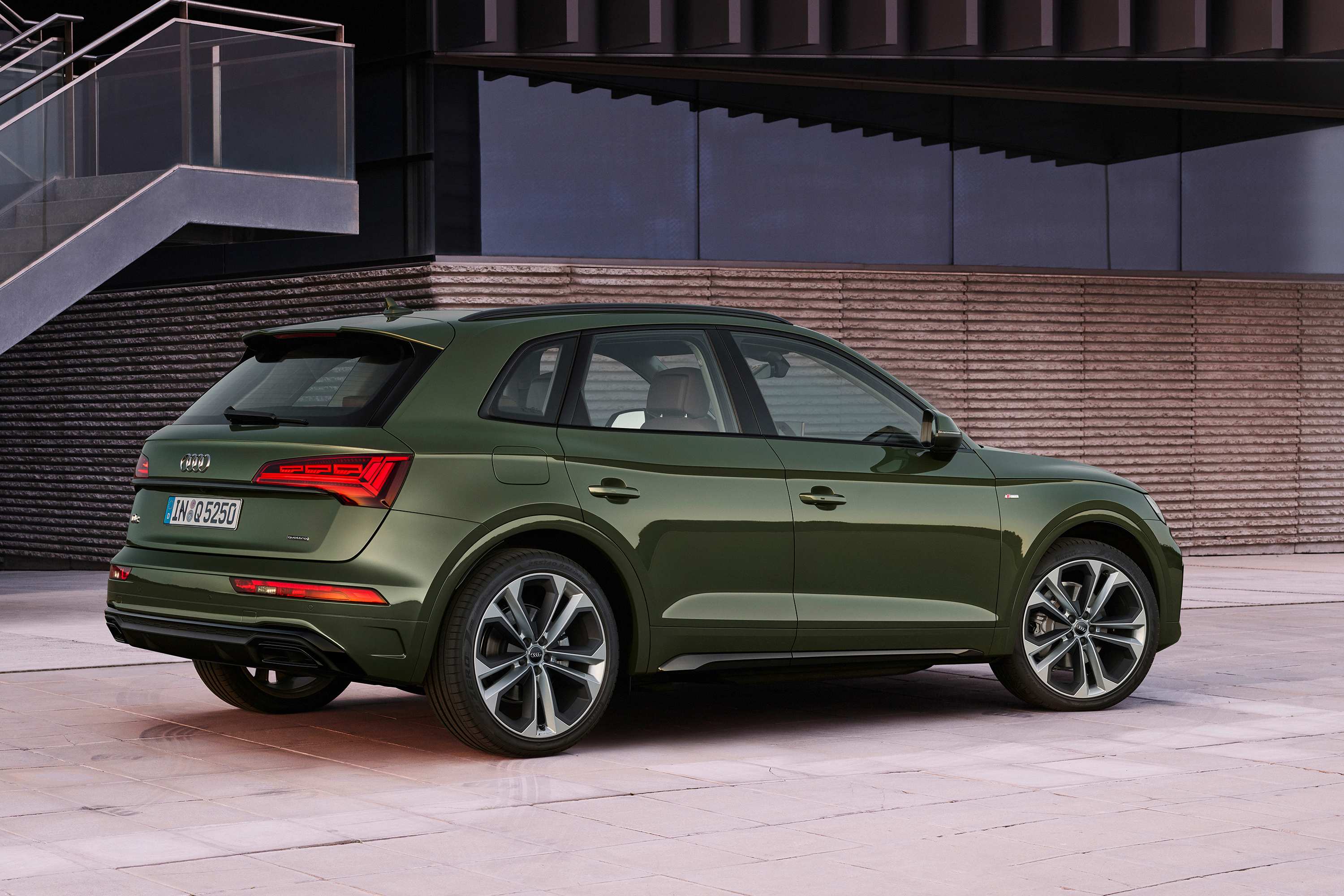
World first: digital OLED technology in the rear lights of the Audi Q5
Next-generation OLED lighting technology is available for the first time ever in the modified Q5. OLEDs are extremely efficient organic light-emitting diodes that generate a homogenous light surface. The optional OLED rear light is split into three tiles of six segments each, which enables Audi designers and developers to create different light designs and signatures from a single item of hardware.
“In addition to perfect contrast, the benefits of digital OLED are a high level of homogeneity and minimal gap between the segments,” explains Stephan Berlitz, head of development, light innovation at Audi.” Looking to the future, digital OLED is therefore the perfect technology for executing personalized light design with a high degree of precision and extensive variability. This technology offers all sorts of opportunities for further development.”
When ordering their Q5, customers can choose from three rear-light signatures, whereby each signature has its own specific designs for coming and leaving home. On switching the Audi drive select mode to “dynamic”, the lights change to yet another signature. The OLED rear-light cluster is also equipped with proximity detection: If a road user approaches a stationary Q5 from the rear to within less than two meters, all the OLED segments light up.
When the Q5 starts to move, it returns to the original light signature. The full spectrum of the OLED rear lights is rounded off by dynamic turn indicators. The basic equipment for the Q5 is now LED headlamps, with matrix LED headlamps available as an option. Their intelligent, adaptable high beam offers greater safety and convenience without dazzling other road users.
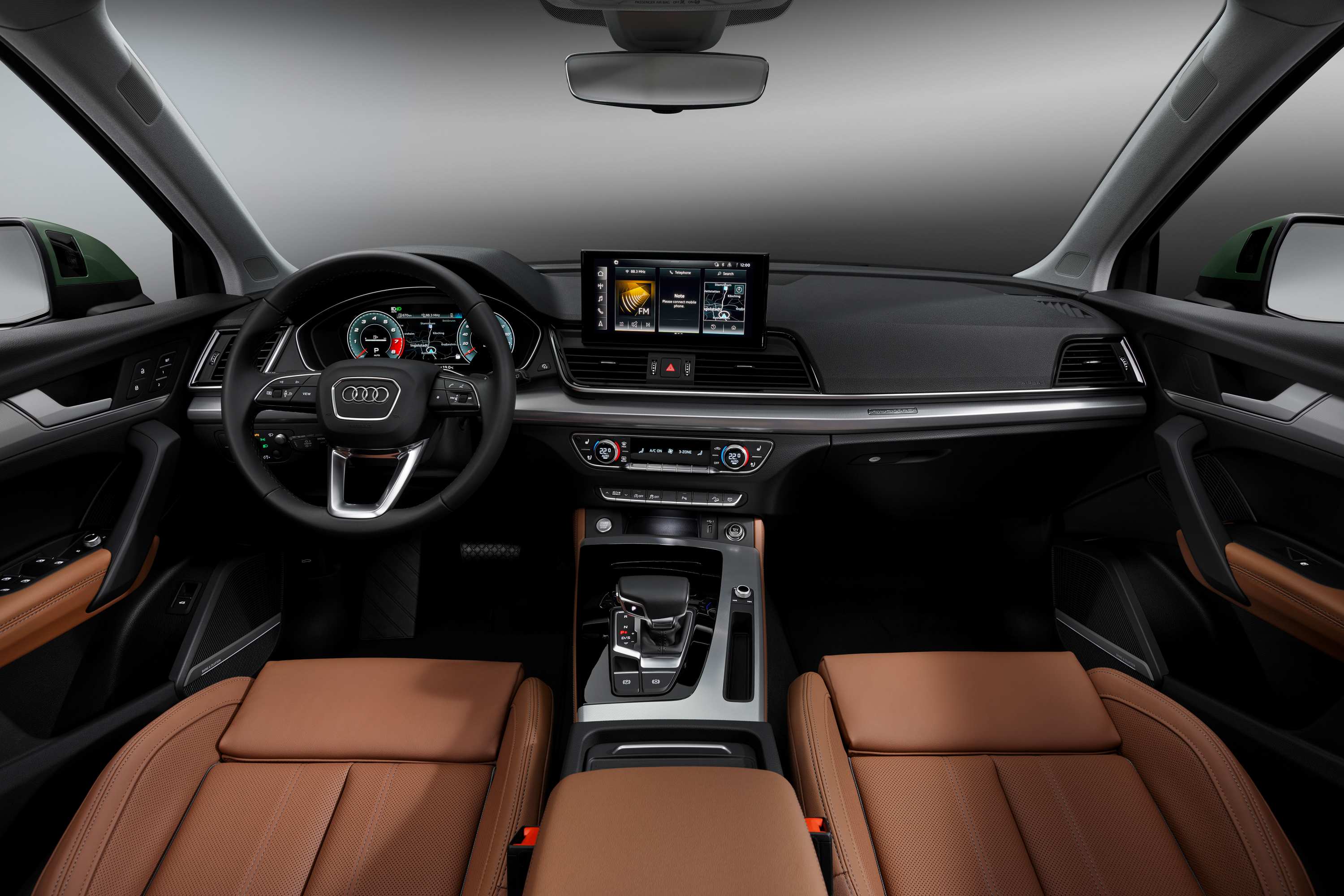
Spacious and variable: dimensions and interior space
At 4.68 meters, the redesigned Audi Q5 is now 19 millimetres longer – due primarily to its larger bumpers. Its width (excl. mirrors) of 1.89 meters and height of 1.66 meters remain unchanged. The long wheelbase of 2.82 meters facilitates spacious interior proportions. Audi’s sliding rear bench plus with adjustable backrests is available as an option.
When this is fitted, the luggage space measures 520 to 1,520 litres. A variable folding floor mat comes as standard, with a power tailgate available as an option. Thanks to its intelligent material mix, the Q5 has one of the lightest bodyshells in the segment, while the cd figure of 0.30 is among the best-in-class. Refined aero-acoustics make for an exceptionally quiet interior.
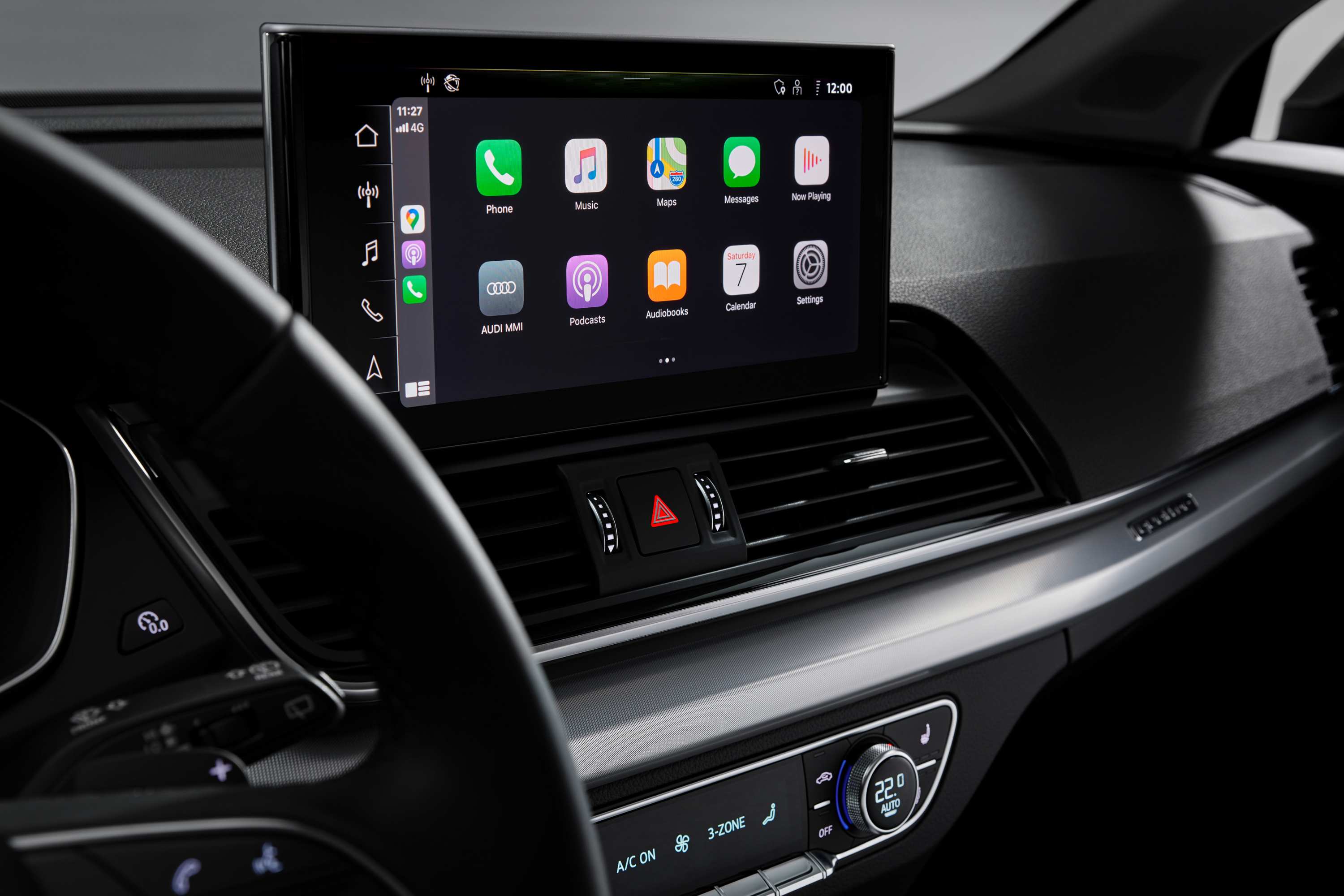
Control, infotainment and Audi connect: premium connectivity
Behind the new control setup in the updated Audi Q5 is a new main unit – the third-generation Modular Infotainment Platform (MIB 3), which offers ten times the computing power of its predecessor, the MIB 2.
Its basis is a conventional dashboard with a centrally positioned driver information system. The top of the range is the Audi virtual cockpit plus – a high-resolution 12.3-inch digital display with three different graphic layouts. The driver controls the displays via the multifunction steering wheel. A head-up display is also available as an option.
The central 10.1-inch MMI touch display is standard equipment in the Q5. Its menu structure with flat hierarchies makes it extremely easy to use, and is searchable using free text. The driver has the choice of entering characters and letters manually or via voice control, which understands a vast array of everyday terms. Combined with the MMI navigation plus infotainment system including Audi connect navigation & infotainment, the voice-control system can access the cloud for even greater flexibility.
The Audi connect online services network the Audi Q5 closely with the internet and traffic infrastructure. The navigation system offers high-resolution satellite images from Google Earth, lane-by-lane information on traffic flow and traffic forecasts. DAB+ digital radio is part of standard equipment, while the Amazon Alexa service allows access to thousands of Alexa skills. The car-to-x services provided by Audi connect make for even more relaxed driving – helping, for example, to find available roadside parking spots or using traffic-light communication in some cities to “surf the green wave.” The myAudi app connects the user’s smartphone to the car.
A wide assortment of personal settings – from frequently used navigation destinations to seating position to preferred air-conditioning levels – can be saved in six user profiles. The data is stored in the myAudi customer portal in the cloud, where it is available for each authorized user in any suitably equipped Audi.
Functions on demand: book anytime post-purchase
An important new feature in the updated Audi Q5 is “functions on demand,” which allows customers to book functions such as MMI navigation plus and the Audi smartphone interface anytime they wish post-purchase via the myAudi smartphone app or myAudi online portal. The functions are then activated over-the-air via a cell data bundle. There is a choice of three usage periods: one month, one year or open-ended.
Driveline: powerful performance, low emissions
The upgraded premium SUV will be available in the European market as the Audi Q5 40 TDI (fuel consumption combined in l/100 km: 5.4-5.3*; CO2 emissions combined in g/km: 143-139). Its powerful two-litre four-cylinder diesel generates 150 kW (204 PS) and 400 Nm of torque. The aluminium crankcase weighs approx. 20 kilograms less than that of the previous engine, while the crankshaft is around 2.5 kilograms lighter.
The mild hybrid system (MHEV) contributes to the low fuel consumption. A belt-driven starter/generator (BSG) supplies the 12-volt vehicle electrical system, which incorporates a compact lithium-ion battery. The BSG recuperates braking energy and stores it in the battery. The MHEV system enables the Audi Q5 to coast with the engine off, and allows for start-stop mode at speeds below 22 km/h. Overall, this results in a fuel-efficiency improvement of approx. 0.3 litres per 100 kilometres. The Audi Q5 40 TDI (fuel consumption combined in l/100 km: 5.4-5.3*; CO2 emissions combined in g/km: 143-139*) accelerates from zero to 100 km/h in 7.6 seconds and reaches a top speed of 222 km/h.
The powerful diesel engine is not only efficient, but also clean – meeting the requirements of the latest Euro 6d-ISC-FCM emissions standard and EU 6 AP. Nitrogen oxide emissions are reduced significantly thanks to a new twin-dosing SCR system with dual AdBlue injection. The urea solution is added upstream of two SCR catalytic converters arranged in series.
More engine versions will follow after the launch of the updated Q5: two further power variants of the four-cylinder TDI, a V6 TDI and two 2.0-litre four-cylinder TFSI engines. The successful Q5 TFSI e with plug-in hybrid drive will also be offered again in two output variants.
In the Audi Q5 40 TDI (fuel consumption combined in l/100 km: 5.4-5.3*; CO2 emissions combined in g/km: 143-139*), a seven-speed S tronic sends the engine power to the quattro all-wheel drive with ultra-technology, which also contributes to efficiency. In normal operation, it sends all the power to the front wheels. If all-wheel drive becomes necessary e.g. in slippery conditions or during dynamic driving, two clutches connect the rear wheels to the driveline in fractions of a second – in many situations, this happens predictively. In terms of traction and performance, the system leaves nothing to be desired
The running gear: even more comfort and agility
Both sporty and comfortable – the well-balanced running gear is a great strength of the Audi Q5. The multilink suspension front and rear are exceptionally lightweight, thus improving not only handling, but also efficiency. Available as an option for the Q5 is Audi’s dynamic steering, which varies its ratio by up to 100 percent in accordance with speed and steering angle.
Q5 customers can choose from four setup options. The sports suspension offers an alternative to the standard suspension. The standard suspension with steel springs is also available with damper control and delivers a broad spread between comfortable and dynamic. As well as damper control, the adaptive air suspension can also vary the ground clearance of the bodyshell in five stages, which makes it an exceptionally good match for the Q5.
The Audi drive select handling system, which influences the characteristics of several technical components, is part of the standard equipment package. The driver can choose from up to seven profiles, including off-road and all-road (with air suspension). The hill descent assistant provides support on steep inclines. The Audi Q5 runs as standard on 17-inch alloy wheels. The advanced line and S line come with 18-inch wheels, while Audi and Audi Sport also offer further 19, 20 and 21-inch wheel designs.
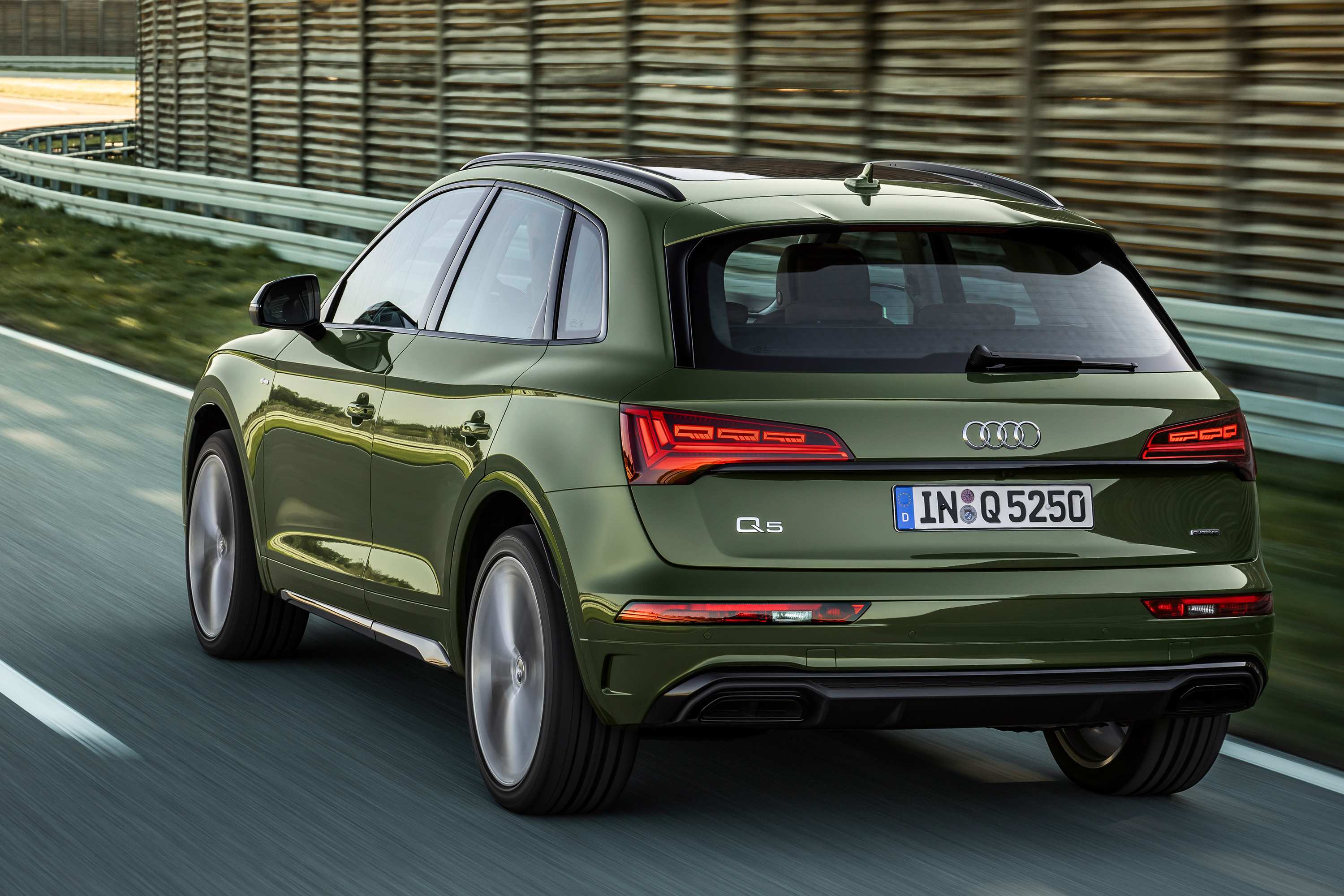
Driver assistance systems: Vorsprung in safety and comfort
The updated Q5 also comes with a comprehensive set of assistance systems. The Audi pre sense city system comes as standard, and helps avoid collisions with road users in front of the vehicle or mitigate their consequences. The optional turn assist, collision avoidance assist and exit warning systems also contribute to overall safety. Adaptive cruise assist can largely relieve the driver of accelerating, braking and lane-keeping manoeuvres for long periods, while predictive efficiency assist supports an anticipatory driving style and lowers fuel consumption.



